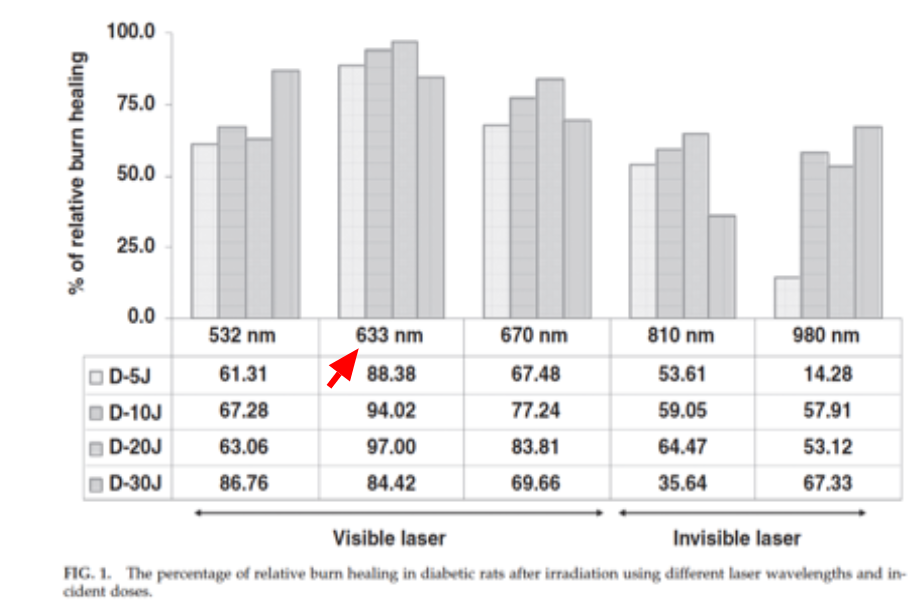Technology
Technology
The use of this term is key, as it distinguishes Low-Level Laser photobiomodulation therapy, which is nonthermal (doesn’t generate heat), from the use of light-based thermal devices used for heating tissues using near-infrared (NIR) lamps.
Non thermal lasers like the Dog Med Laser are certified for home use, have been proven efficient and safe. Thermal lasers are not certified for home use and require handling by a specially trained specialist to avoid dangerous adverse effects.
“Not enough is not enough, and too much is too much.” That is in layman terms, the translation of the Arndt–Schulz dose-response law.
Small doses of energy stimulate functions in living cells with no inhibition. Larger doses of energy initially stimulate, but if the doses increase, they start to inhibit cell functions. Very large doses of energy dramatically stimulate for milliseconds, and then dramatically (and for an extended time) totally inhibit the cells. This means, low levels of laser lights are good for you, but high levels (like Class IV lasers) are bad for you.
Reference: R. Chow et al., “Inhibitory effects of laser irradiation on peripheral Mammalian nerves and relevance to analgesic effects: a systematic review,” Photomed. Laser Surgery 29(6), 365–381 (2011).

It is proven that infrared wavelengths penetrate deep into tissue, but that does not mean that they are the absolute best. Note the percentage of relative burn-healing after irradiation with different wavelengths: 633 nm is the clear winner (Al Watban et al., 2007). This is what the DML produces.
The infrared wavelength uses the water chromophores, whereas the visible red 600-670 nm wavelengths uses hemoglobin. Low-Level Laser 635 nm generated photons are transported by blood to the cells that make up tissues.
Red 635 nm absorption spectra: oxyhemoglobin
HbO2 Oxyhemoglobin
Dog Med Laser emits 635nm red laser beams. The most efficient wavelength as proven below by Professor A Watban.
Cells in animal bodies communicate with each other 24/7. This is called cellular communication. Dog Med Laser photon delivery frequencies are designed to stimulate the cells to specific tasks.
Naturally, the stimulated cells send the task messages to similar cells, which in turn do the same to other similar cells, etc.
Some studies have shown, for example, that exposing one leg wound to red-laser photons accelerates not only the treated wound’s closure but also the closure of a wound located on the other leg that was never exposed to laser beams.
For more info:
J. Ty Hopkins et al. Low-Level Laser Therapy Facilitates Superficial Wound Healing in Humans : A Triple-Blind, Sham-Controlled, Study Journal of Athletic Training (2004)
Dog Med Laser is a true nonthermal laser using 635 nm red beam superior quality laser diodes generating a power of 21.5 milliwatts per diode with frequencies for better results.
635 nm red beams have been in use since the late 1960s and have been proven over and over again to be the best wavelength to deliver cellular stimulation and trigger cellular communication in order to generate positive results for inflammation pain management and for acceleration of wound closure.
We at Dog Med Laser consider laser diodes to be the most efficient photon delivery medium to stimulate human or animal cells. Dog Med Laser diodes are expected to last many, many years, if used in a normal home environment.
Low-Level Photobiomodulation Lasers work by stimulating cells to do specific tasks. Cells are fragile organisms and coaxing them to do work a certain way is tricky.
Low-Level Laser photons’ delivery to the cells must respect a few principles in order to generate efficient results.
Dog Med Laser’s manufacturer is a member of the World Association of Laser Therapy (WALT).
Learn more about Photobiomodulation from Professor Michael R Hamblin PhD, lead investigator at the Wellman Center for Photomedicine / Massachusetts General Hospital, Professor at Harvard Medical School, the world top Photobiomodulation expert.
Read the American Society of Laser Medicine and Surgery Paper.